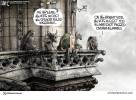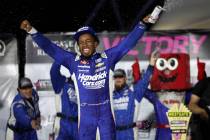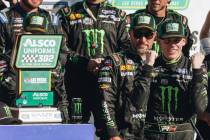Hemi-powered Chryslers ruled 1960s
If there was a Hemi-powered Chrysler on the drag strip in the mid-to-late 1960s, you had better pray to the heavens that you wouldn’t have to square off against it at the starting line.
Of course, Chrysler knew what it had created. After all, building this beast (actually, it was referred to as the “elephant”) was no accident. The street Hemi (an abbreviation for its hemispherical combustion chambers) was a direct descendant of the race Hemi built to hunt Fords and Chevys on the NASCAR stock-car circuit. At 426 cubic inches of displacement, the Hemi took maximum advantage of NASCAR’s magic 7.0-liter rule.
With a string of victories as long as a Cadillac’s tail fins, the mere mention of the Hemi literally freaked out anyone who knew anything about cars … fast cars, that is. With the street version’s 425 horsepower (actual ratings are closer to 465) at 5,000 rpm and 490 pound-feet of torque at 4,000 rpm, there was no question that Chrysler knew where the rubber met the road. Of course, by 1970, the Hemi, in one form or another, had been flogged at drag strips all over America for more than a decade.
But, there was one teeny, tiny problem. To put it mildly, Chryslers were, ahem, conservative, in the looks department, the opposite of what was driving an image-conscious 1960s car-buying crowd. You had to look as fast as you could go. While the GTO, Mustang, Fairlane, Camaro and Chevelle had be terrorizing the streets for years, Chrysler was content to drop big motors in midsized family cars such as the Belvedere. All go and very little show, to be sure. In 1966, you could order the fire-breathing street Hemi, but only if you could live with the looks of the stub-nosed Belvedere/Satellite or hunchbacked Charger. Sorry, but that’s the kind of Chrysler you had to buy if you wanted a Hemi. But what good was owning your very own elephant if you couldn’t really trumpet that fact to the rest of the world? And then there was the price. A $900 premium, referred to as “staggering” by Car and Driver Magazine in April of 1966, wasn’t making a Hemi an easy thing to afford.
That ideology lumbered along for a couple more years until the B-Body Dodges and Plymouths (Charger and Road Runner) were reinvented in 1968. While met with healthy sales success, they still lacked the all-out sex appeal of the smaller, glossier Mustangs, Chevelles and Camaros of the day.
It took until 1970 to come up with the magic formula. The redesigned Barracuda and new Challenger were built on a more rigid “E-body” unitized platform. With a short rear deck, long hood, trick-looking Shaker scoops, screaming colors, strobe stripes, decals, whistles, bells, gizmos and geegaws, there was no question where you would put your money if you wanted the hottest ride around.
Finally, the Hemi engine was home. And a great home it was.
In 1970, buying either a Challenger R/T with a Hemi under the hood or a Hemicuda (the ‘Cuda was actually a separate model from the Barracuda) was akin to achieving talk-show-host status, because if you went anywhere, you spent most of your time talking about the car.
The ‘Cuda was not only hot looking, but robust enough to race against Boss Mustangs and Z/28 Camaros of the day.
That type of popularity continues even to this day. The Hemi Dodge Challenger and Plymouth Hemicuda are so highly regarded today that prime examples have sold for millions of dollars. That might have to do as much with rarity as desirability. The 1971 Hemicuda convertible, for example, is the rarest of the rare with only seven ever built. That’s right … seven.
You see, fate would play a bigger part in the Hemi’s future than even Chrysler could. Mounting insurance premiums, emissions regulations and gas shortages cut the knees out from the Hemi before more than a handful of examples could be built and sold. In fact, the politics of the day made it almost impossible to realistically own a musclecar during the beginning of the 1970s and, as such, demand for high-horsepower boulevard bruisers fell off a cliff.
It was like a switch had been flicked overnight. As early as 1971, horsepower ratings plummeted for the Big Three’s muscle machinery. While the Hemi cars returned fully charged for 1971, by 1972 it was all over. And in 1973, all you could get was the small block 340, then rated at 245 horsepower. At the end of 1974, the E-Body’s run was officially over.
But that’s hardly the end of the story. By all accounts, the Challenger and Barracuda were the cars that showed Chrysler had what it took to lead the pack, both in terms of power and style. Back in 1970, the Hemicuda was the car to own, bar none. Forty years later, it still is.
Jeff Melnychuk is Wheelbase Communications’ managing editor. He can be reached on the Web at www.wheelbase.ws/mailbag.html. Wheelbase Communications supplies automotive news and features to newspapers and Web sites across North America.


















